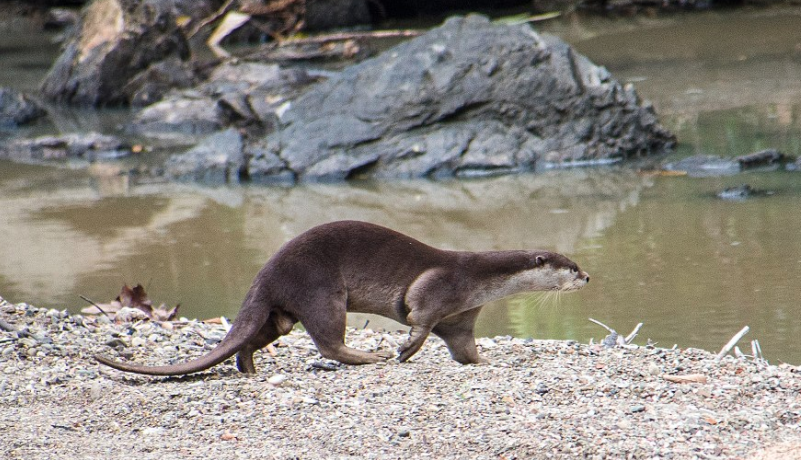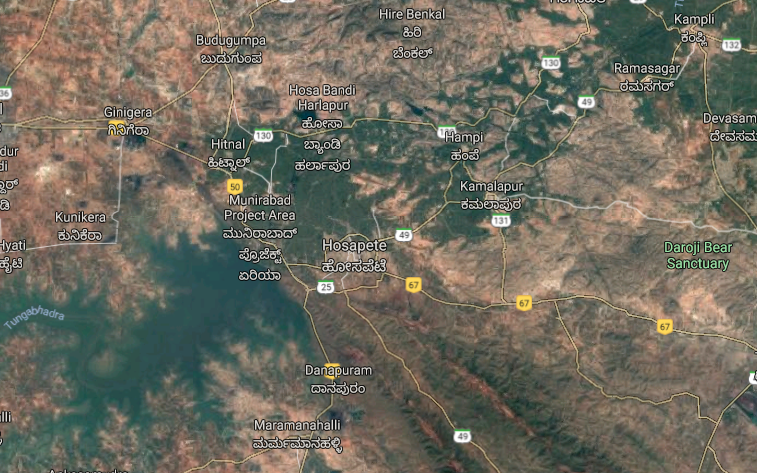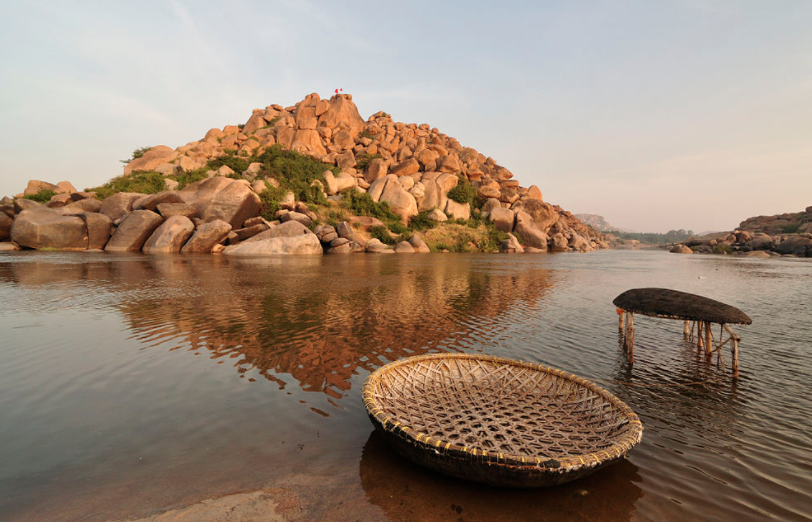- Karnataka initiated otter conservation by declaring 34 km along the Tungabhadra as a reserve.
- This action created an area where the otter habitat can be conserved.
- More follow-up action is needed to build on this initiative to conserve the smooth-coated and small-clawed otter population.
Inside the country’s first ever otter reserve in Karnataka, there is a family of smooth-coated otters (Lutrogale perspicillata) gathered at a spot. They are involved in activity that binds them together as a family and group. They are defecating together.
If for humans the adage states that a family that eats together stays together, it is the other end of the digestion process for otters. Diligently performed as a group exercise, defecating as a family or a pack all at a specific site or area is their cautionary sign that warns any intruders to keep away or enter at their own risk. This enables them to not only mark their territory and safeguard their pack but also ensure that it is not taken away from them by keeping intruders out. This has proved to be an important survival tool for them.

“The river otters in Karnataka, as well as other parts of India, are currently facing a combination of pressures. These include landscape changes, habitat loss and destruction, overfishing by trawlers, conflict with local fishermen to some extent as well as poaching,” said Indrajit Ghorpade, managing trustee, Deccan Conservation Foundation and honorary wildlife warden, Koppal District.
A conservation reserve for otters
Karnataka has the country’s first otter reserve acknowledging the importance of this species of wildlife and to take necessary action to protect them before it is too late. The Tungabhadra Otter Reserve Sanctuary, a 34-km stretch of habitat along the Tungabhadra river from Mudlapura village to Kampli in Ballari district, was notified in 2016. The stretch also includes the World Heritage site Hampi and covers both Koppal and Ballari districts. This stretch is home to largely the smooth-coated otter and small-clawed otter (Aonyx cinerea), both Vulnerable under the IUCN Red List.

“The reserve is a good start but my fight for conservation happens outside of this protected area as wildlife knows no boundary. Awareness is key and there is a great need to educate the people in this region of the importance of protecting the habitat, both for themselves as well as the otters and in turn the ecosystem. While the reserve has been demarcated, there is the need for a set policy with guidelines that accurately state this fact and explain the measures required to be put in place,” added Ghorpade.
Calling them carnivores in the truest sense of the word, Nisarg Prakash, an independent wildlife biologist who has been working on otter conservation for nearly a decade, states that the agility and adaptability of otters are amazing. “They are social animals and a lot of this comes from being in a large group and being able to adapt. They have learned to live alongside fishermen, alongside fishing nets and live in habitats that are changing really fast,” Prakash added.
According to him, the reserve could serve as a model for the rest of the country on taking that first step towards otter conservation if the habitat is restored successfully. At present, the recognition that this is a good place or area for otter habitat conservation is merely on paper alone and nothing more has happened.
A world-famous tourism spot and other pressures
The 34-km stretch along the Tungabhadra river is densely populated, and there is a huge pressure from tourism in Hampi, the historical city that is visited by both domestic and international tourists. The region also has intensive agricultural activities.

Biologists and conservationists are of the opinion that this has to be a dedicated long-term effort and this has to be done by involving the local community and enlisting fishermen in the whole conservation process. Whatever needs to be done for the otters needs to also consider all that is happening or exists along this river.
“What we need above all else, is habitat protection and this means ensuring the habitat is left alone, undisturbed,” said Atul Borker, founder-director, Wild Otters and continental coordinator for South Asia, IUCN/SSC Otter Specialist Group. “Also, river banks must be kept intact, water quality maintained well, hydroelectric projects have to be kept out of these habitats and conservation efforts need to be generated by making people aware of otters and develop skill sets to enable more research that will fuel conservation. Pollution, fishing and sand mining are some of the biggest causes of habitat destruction and increasing awareness can help in prevention.”

According to Borker, otters are semi-aquatic animals and it may not be possible to limit their movements to a reserve. However, having a reserve strengthens awareness about the species and their needs. It could contribute positively in preserving the habitat for these riparian mammals who are accorded the highest protection under Schedule 1 (small-clawed otter) and Schedule 2 (smooth-coated otter) of the Wildlife Protection Act, 1972.
India is home to three of the 13 species of otters in the world that feed mostly on fish and crustaceans. The smooth-coated otters, that are the largest of the three species in the country, is traditionally a freshwater species but adapted to estuarine habitats and is found across several parts of the country. Very little is known about the second species – the Eurasian otter (Lutra lutra) although recent reports place them across Central India, Western Ghats, Ladakh and Sikkim. The third and the world’s smallest otter is the small-clawed otter found in hilly areas such as the Eastern and Western Ghats, the foothills of the Himalayas and parts of North East India.

Otters are spirited, agile, swift on both land and water, social and unflinching when it comes to protecting their family. Otters in a riverine system are like large carnivores in a forest. They are at the top of the aquatic food chain, alongside crocodiles and fish eagles. They are indicators of good ecological health of the riverine system. Removing them from the ecosystem can cause immense ecological imbalance resulting in severe repercussions on the environment.